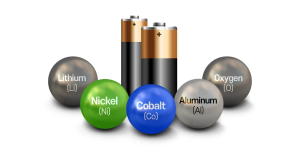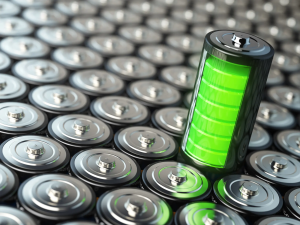The Science Behind Lithium-Ion Batteries: How They Work and Why They're Popular

Lithium-ion batteries have revolutionized the world of portable electronics and are increasingly being used in electric vehicles and renewable energy storage systems. Their high energy density and long cycle life make them ideal for a wide range of applications. But how do these batteries work? In this article, we will explore the science behind lithium-ion batteries and why they have become so popular.
What is a Lithium-Ion Battery?
A lithium-ion battery is a type of rechargeable battery in which lithium ions move from the negative electrode (anode) to the positive electrode (cathode) during discharge and back when charging. The battery typically consists of two electrodes made of different materials, a separator that prevents them from touching, and an electrolyte that facilitates the movement of ions between the electrodes.
How Does a Lithium-Ion Battery Work?
Lithium-ion batteries work by using a chemical reaction to produce electrical energy. The battery contains two electrodes: a positive electrode and a negative electrode. The positive electrode is made of a lithium compound, while the negative electrode is made of graphite. When the battery is charged, lithium ions move from the positive electrode to the negative electrode, where they are stored. When the battery is discharged, the lithium ions move back to the positive electrode, producing an electrical current.
The electrolyte is the key to the operation of the battery. The electrolyte is a liquid or gel substance that contains lithium ions. It allows the lithium ions to move freely between the positive and negative electrodes. The separator is a thin layer of material that prevents the positive and negative electrodes from touching each other, which could cause a short circuit. The casing of the battery protects the electrodes and separator from damage.
Why Are Lithium-Ion Batteries Popular?
Lithium-ion batteries have become increasingly popular in recent years due to their high energy density, long cycle life, and low self-discharge rate. They can store more energy per unit weight and volume than other rechargeable batteries, such as nickel-metal hydride and lead-acid batteries, making them ideal for portable electronics.
In addition, Lifepo4 batteries have a long cycle life, meaning they can be charged and discharged many times without significant degradation in performance. This is due to the use of high-quality electrode materials and electrolytes that minimize side reactions that can cause the battery to degrade over time.
Lithium-ion batteries also have a low self-discharge rate, which means they can hold their charge for extended periods when not in use. This makes them ideal for backup power systems and other applications where a reliable source of power is required.
Advantages of Lithium-Ion Batteries.
There are several advantages of lithium-ion batteries. First, they have a high energy density, which means they can store a lot of energy in a small space. This makes them ideal for use in portable devices and electric vehicles. Second, lithium-ion batteries are lightweight and compact, which makes them easy to transport and install. Third, they are rechargeable, which means they can be used again and again. Fourth, lithium-ion batteries have a long lifespan, which means they can be used for several years before needing to be replaced. Finally, they have a low self-discharge rate, which means they can hold a charge for a long time without losing power.
Disadvantages of Lithium-Ion Batteries
There are also some disadvantages to lithium-ion batteries. First, they can be expensive to manufacture. Second, they can be dangerous if not handled properly. If a lithium-ion battery is damaged or overheated, it can catch fire or explode. Third, lithium-ion batteries can degrade over time, which can reduce their capacity and lifespan. Fourth, lithium-ion batteries are sensitive to temperature, which means they can lose capacity in extreme temperatures. Finally, lithium-ion batteries are not yet as energy-dense as some other types of batteries, which means they may not be suitable for all applications.
Applications of Lithium-Ion Batteries
Lithium-ion batteries are used in a wide range of applications, including:
Portable electronics such as smartphones, laptops, and tablets.
Electric vehicles, including cars, buses, and bikes.
Renewable energy storage systems, such as solar and wind power installations.
Backup power systems for homes and businesses.
Medical devices such as pacemakers and defibrillators.
Conclusion
Lithium-ion batteries have revolutionized the world of portable electronics and are increasingly being used in electric vehicles and renewable energy storage systems. Their high energy density, long cycle life, and low self-discharge rate make them ideal for a wide range of applications. By understanding the science behind these batteries, we can appreciate their importance and continue to improve their performance and reliability.











